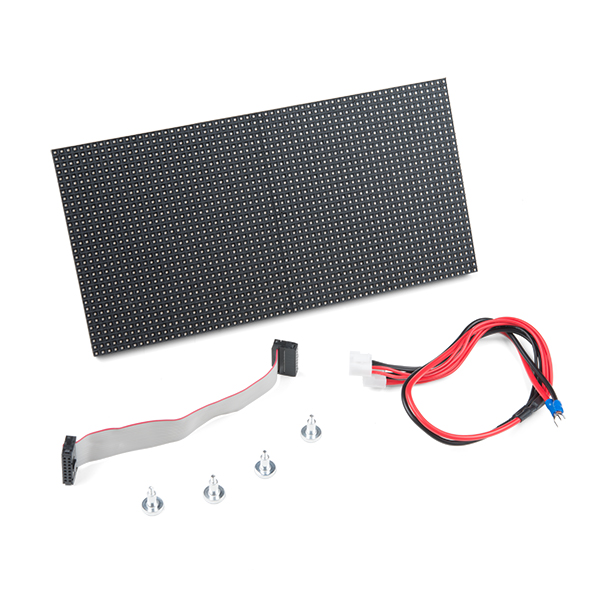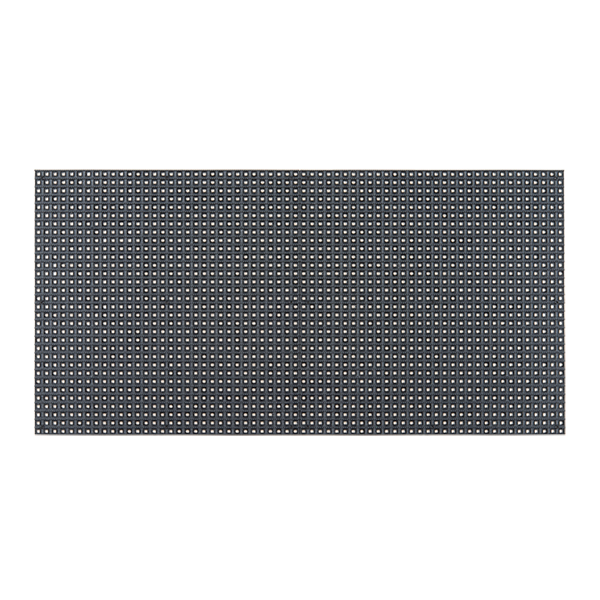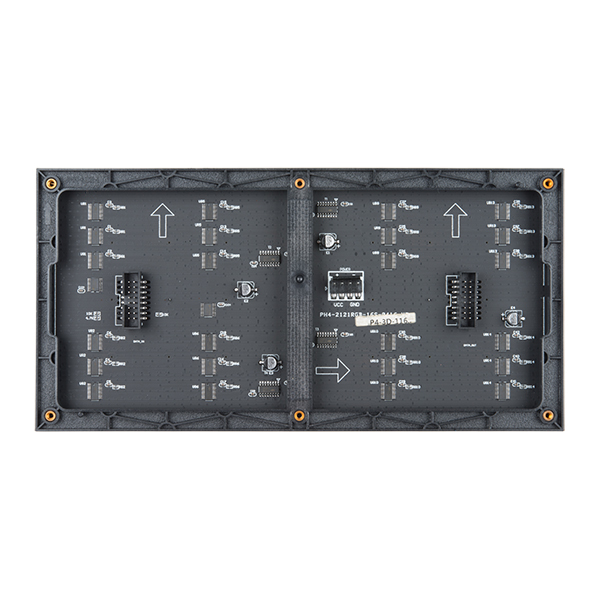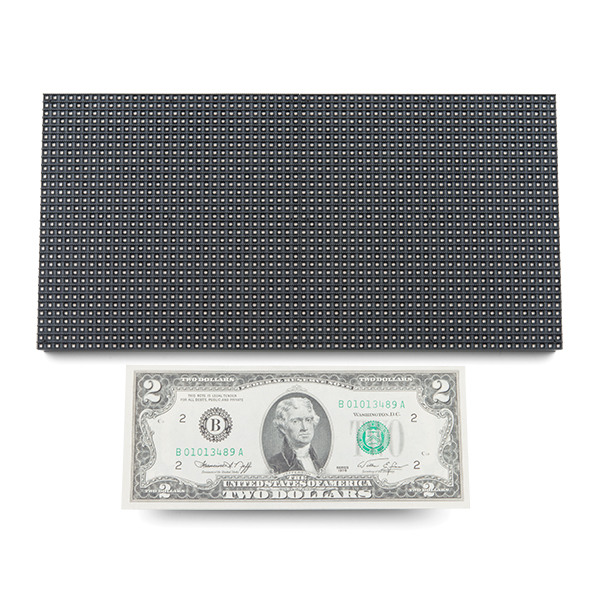RGB LED Matrix Panel - 32x64
Are you looking to add a lot of color to your project? These 32x64 RGB LED panels are an awesome place to start! You can create animations, games, or all sorts of other fun displays with them. Yes, you read that right: a 32x64 LED matrix, that's 2048 LEDs on a 10" x 5" board. On top of all that, thanks to an IDC connector and a seamless frame, these panels can be daisy chained together to form even bigger LED displays.
These panels require a regulated 5V supply for power which needs to be able to source a good amount of current – up to 4A in the worst case. Included with each panel is a 0.15" pitch 4-pin polarized connector power cable which is terminated with both a female polarized connector, and a pair of spade terminals. Needless to say, if you are looking for a large, cheap, and easy to use RGB LED matrix you've come to the right place.
Note: The LEDs on this matrix are smaller than those found on its 32x32 sibling providing better detail in the images and designs you create. Please keep that in mind before purchasing.
- 1x 32x64 RGB LED Panel
- 1x 4mm Pitch 4-pin Power Cable w/ Spade Connectors
- 1x 16-pin (2x8) Ribbon Cables
- 4x Magnetic Mounting Standoffs
- 2048 RGB LEDs
- 1/16 Scan Rate
- IDC Connector for Daisy Chaining
- 5V Supply Voltage
- Hookup Guide
- All About LEDs
- Datasheet
- SmartMatrix Library (Teensy 3)
- RGBMatrixPanel Library (Arduino)
RGB LED Matrix Panel - 32x64 Product Help and Resources
Getting Started with the SmartLED Shield for Teensy
November 9, 2018
In this tutorial, we will connect different RGB LED matrix panels to PixelMatix's SmartLED shield and Teensy.
RGB Panel Hookup Guide
December 12, 2013
Make bright, colorful displays using the 32x16, 32x32, and 32x64 RGB LED matrix panels. This hookup guide shows how to hook up these panels and control them with an Arduino.
Core Skill: Programming
If a board needs code or communicates somehow, you're going to need to know how to program or interface with it. The programming skill is all about communication and code.
Skill Level: Competent - The toolchain for programming is a bit more complex and will examples may not be explicitly provided for you. You will be required to have a fundamental knowledge of programming and be required to provide your own code. You may need to modify existing libraries or code to work with your specific hardware. Sensor and hardware interfaces will be SPI or I2C.
See all skill levels
Core Skill: Electrical Prototyping
If it requires power, you need to know how much, what all the pins do, and how to hook it up. You may need to reference datasheets, schematics, and know the ins and outs of electronics.
Skill Level: Rookie - You may be required to know a bit more about the component, such as orientation, or how to hook it up, in addition to power requirements. You will need to understand polarized components.
See all skill levels
Comments
Looking for answers to technical questions?
We welcome your comments and suggestions below. However, if you are looking for solutions to technical questions please see our Technical Assistance page.
Customer Reviews
3.7 out of 5
Based on 3 ratings:
RGB LED Panel
Panel works well. Hookup was easy and examples ran without a problem once the needed libraries were installed. Online tutorial was helpful.
Only 1 of 4 work
Ordered 4, 3 were defective, rma'd. The D Select Line was inverted and the RGB lines were ordered incorrectly. The 1 that works correctly is fine.
Sorry that these are giving you issues. We have a ticket open with you to get these back with resolution being a refund. If we can do anything else please send us an Email(Support@SparkFun.com and I will take care of it.
Works great, save for a couple minor issues.
I'm completely satisfied with this display, but it has a single dead pixel in one corner. Besides that the only other issue is the RGB pins are mislabeled. The pins marked red are blue, blue are green, and green are red. Easy fix, but a curious issue. I had a lot of fun figuring the ins and outs of the display while programming a driver for STM32.






Hello whats is life time of product ?
Could you consider it for new projects?
Could you clarify your questions? If you are trying to use this product to manufacture your own product, I don't advise it. Our supplier sometimes changes the design of this product. Functionally it is the same, but the hardware layout changes.
Heads up! These will happily pull 4A from your power supply, not 2A, due to having twice the LEDs of their 32x32 cousins.
For those keeping score at home, this is a P4 panel, 4mm LED pitch. The other panels SparkFun carries are P6 6mm.
Sorry for the confusion. Testing the 32x64 with all the LEDs turned on (i.e. full white) and a variable benchtop power supply set at 5V/4.8A, one of these panels was pulling about ~3.36A-3.43A without a heat sink. Testing it with animations (i.e. modified plasma_32x32.ino for 32x64 on an Arduino Mega 2560), it was pulling an average of about ~1.4A-1.5A. I would set it at a lower brightness so it is not blinding. 8)
The datasheet says 25 watts at 5 volts, which implies 5A. I assume that's for the worst case, where every single pixel is turned on full white.